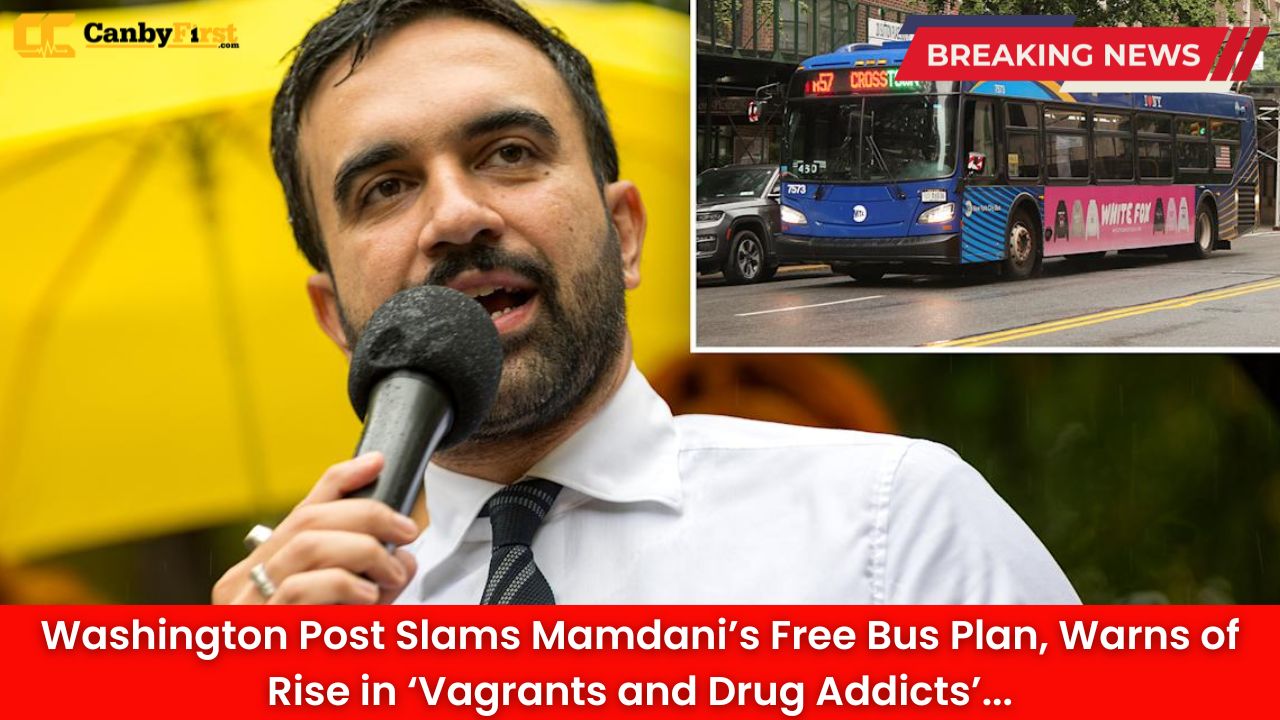New York, US:
A heated political and cultural clash is brewing in New York City after The Washington Post published a sharply worded critique of State Assemblymember Zohran Mamdani’s plan to make all city buses free of charge. The paper claimed that universal free bus service could attract “vagrants and drug addicts,” igniting debate over public safety, transit equity, and ethical responsibility in urban policy.
Mamdani, a Democratic socialist representing western Queens, has long championed fare-free public transit as a way to ease economic burdens, reduce congestion, and lower climate emissions. His latest proposal — part of a broader movement already tested in several US cities — envisions removing fares completely across the Metropolitan Transportation Authority’s bus network.
Also Read
Washington Post’s Harsh Editorial
The Washington Post’s editorial board didn’t hold back. In its recent piece, it described the plan as “well-intentioned but dangerously naïve,” warning that without fare barriers, buses could become “rolling shelters for vagrants” and “unsafe spaces where commuters feel threatened.” The article further suggested that drug use and petty crime could rise, citing examples from transit systems in San Francisco and Portland where fare-free or low-barrier policies allegedly led to increased disorder.
While the language drew national attention, critics of the editorial argue that it leans on stereotypes and fear-based narratives rather than hard evidence.
Mamdani’s Counterargument
In a swift response, Mamdani defended the plan as a moral necessity and ridiculed the editorial’s tone as “elitist fearmongering.” He emphasized that public transit should be considered a right, not a privilege, and that accessibility must trump assumptions about who uses the service.
“This is about dignity and fairness,” Mamdani said during a weekend rally in Astoria. “When we start deciding access based on fear of who might show up, we erode the very idea of public infrastructure.”
He also pointed to smaller-scale pilots — such as fare-free programs in Worcester, Massachusetts and Olympia, Washington — which reported boosts in ridership without major spikes in crime.
Public Opinion Split
The Post’s comments sparked outrage among grassroots transit advocates, who accused the paper of pushing a classist narrative. Social media exploded with counterpoints, with many citing personal stories of how fare-free transit allowed them to access jobs, schools, and health care more easily.
However, several commuter forums lit up with concerns mirroring the Post’s worries: overcrowding, disrespect for bus etiquette, potential spikes in drug use, and cramped conditions for daily riders.
Safety Concerns and Possible Solutions
Transit experts suggest that any fare-free policy must be coupled with upgraded safety measures. Recommendations include hiring more transit police or trained social workers, increasing bus frequency to prevent crowding, and investing in shelter programs for unhoused populations so buses aren’t used as makeshift bedrooms.
Some believe that technology-based solutions — such as real-time monitoring and better driver support — could help address anti-social behavior without reinstating fares.
The Political Fallout
Politically, the controversy is sharpening battle lines between progressives pushing for expanded social services and moderates who prioritize controlled spending and security. Opponents accuse Mamdani of ignoring fiscal realities, noting that the annual cost of fare-free buses could exceed hundreds of millions of dollars, with unclear funding sources.
Supporters counter that the money could come from cutting subsidies to wealthy developers or increasing taxes on high earners, turning the conversation into a broader debate about wealth redistribution in the city.
What’s Next?
The New York State Assembly will hold a public hearing next month to examine the feasibility and potential impacts of Mamdani’s proposal. The Washington Post editorial is expected to come up in testimonies, alongside real-world data from cities that have tried similar models.
Whether the plan moves forward may depend on how convincingly its supporters can argue that safety and accessibility are not mutually exclusive — and whether they can dispel fears amplified by media headlines.
FAQs
Q1: Who is Zohran Mamdani?
He is a State Assemblymember representing western Queens, known for progressive stances on housing, healthcare, and public transportation.
Q2: What does Mamdani’s proposal include?
It calls for eliminating fares on all buses in New York City, making them free for every rider.
Q3: Why did The Washington Post criticize it?
The paper argued it might attract unhoused individuals and drug users, creating safety concerns.
Q4: Have other cities tried fare-free transit?
Yes, cities like Worcester and Olympia have implemented it with varying outcomes on crime and ridership.
Q5: When will a decision be made?
Public hearings are set for next month, where the plan’s viability and risks will be assessed.












